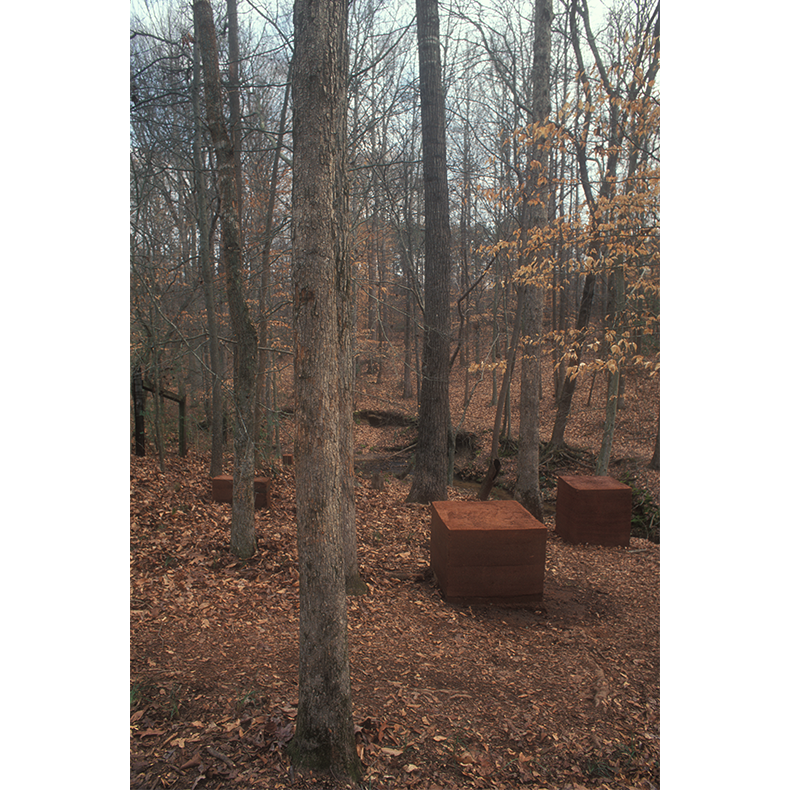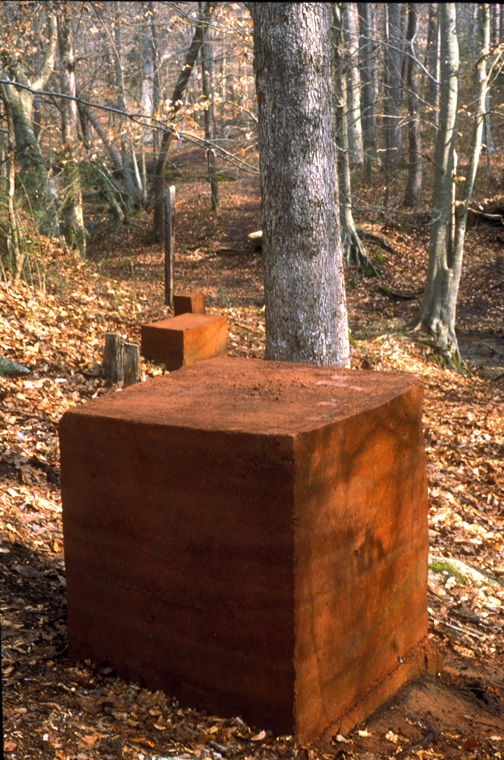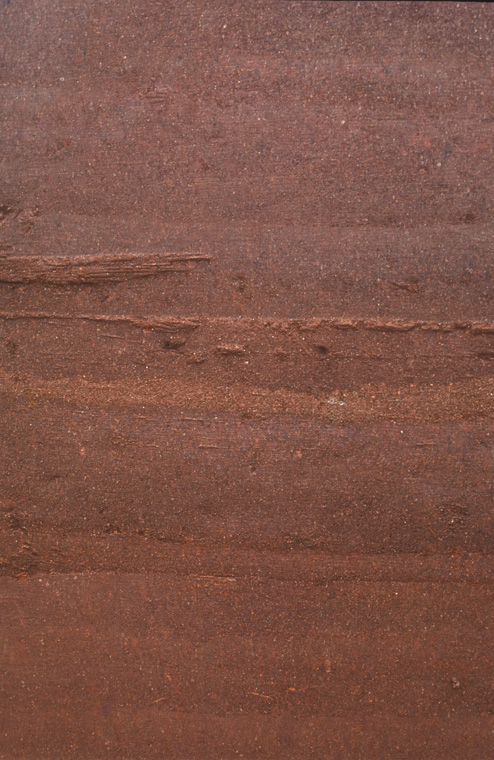Invisible Operations
South Carolina Botanical Garden, Clemson, SC, 1999, 28 rammed earth geometric solids ranging in size from 1' square cubes to a wall 6'8" x 6' x 2', site: approx 1 acre.
Invisible Operations asserts my certainty in the ongoing presence of unseen, but nonetheless tangible, processes and their affect on our lives. The phrase "invisible operations" refers to a London Times article published in 1870, a time "when scientists were first confronting the universe in microscopic detail previously unimaginable." Indigenous South Carolina red earth, fortified with a small percentage of cement, has been compacted into geometric forms. Ramming red soil in compact successive layers creates solid structures that reference layered geologic formation. Since ramming earth requires no external structure, beyond the molds for construction, the solid red earth blocks appear to have simply emerged from the topography of the site. They serve as a cautionary tale just as everyone has a story about a beloved bit of land - a meadow, a forest, a creek or a ravine - that suddenly has become a shopping mall, a parking lot or blocks of new houses. Geometric form is a metaphor for this human transformation of land - the way we grid, divide and construct as we live on the landscape.
Rammed earth, a building technique known since prehistory, has several historical links to South Carolina. At Stateburg, South Carolina there stands today a church built entirely of rammed earth in 1850. Clemson University was one of four colleges in the country active in rammed earth research during the 1940s and early 1950s. Invisible Operations makes use of research published by the Clemson Agricultural College Engineering Experiment Station (Bulletin #3) over a half century ago.
Purple leaf European Beech trees have been planted near the rammed-earth blocks. The newly planted trees will grow up to mark the position of the blocks as they slowly erode. They will add new color to the forest and extend the adjacentAmerican Beech grove. Thus the project employs natural processes and indigenous materials in combination with invented processes and imported materials.
Walking, observing and remembering are key to the conception and experience of Invisible Operations. To see the whole sculpture one must traverse the site and reconstruct it over time and in memory. The blocks, plants, and site will change over the years as they are continuously shaped and reshaped by processes of weathering, growth, and human interaction.



